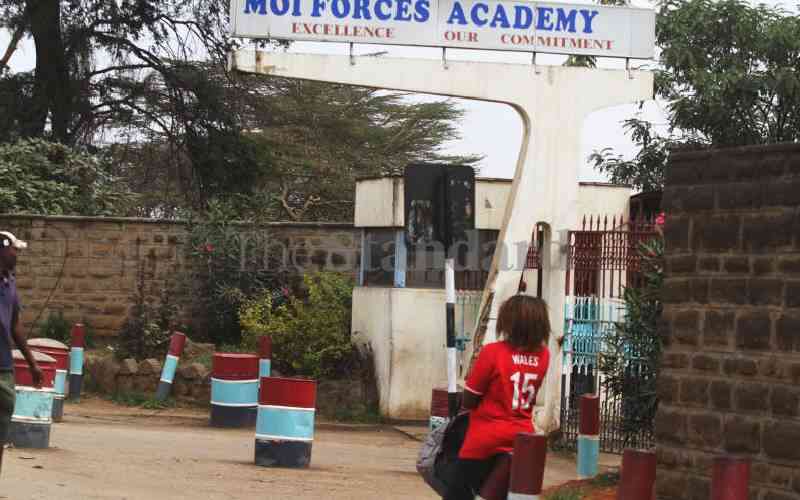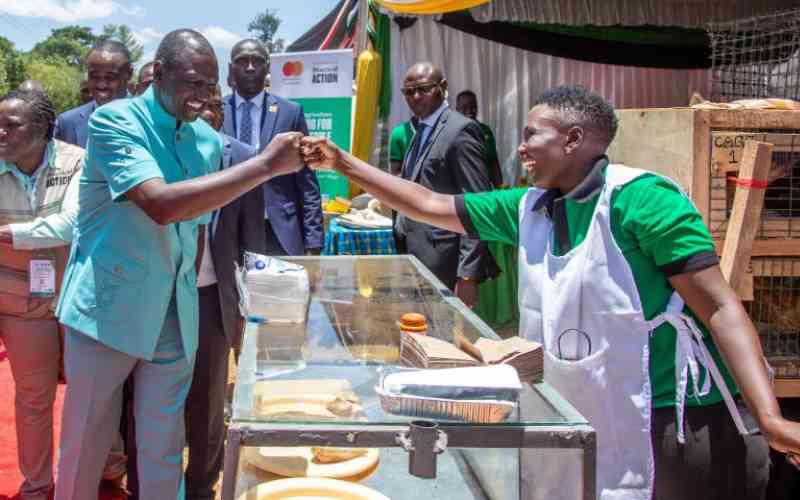Lemaiyan Thomas Mutemperia, 27, grew up in a dusty village in Kajiado, but when he realised his talent was on the runway, he decided to go a notch higher. The Environmental Studies degree holder tells KIUNDU WAWERU what led him to train models
From dusty paths in Kajiado to fashion runways in Nairobi; how and when was the turnaround?
That’s the exact question my friends kept asking me at the seminary.
Seminary? You mean you wanted to become a priest?
(Laughing) Yes. Growing up in Nkaimurunya Village in Kajiado, I admired priests. They seemed different and their lifestyle inspired me to be one. Also, while in primary school, I was an altar boy and I joined high school at the Apostles of Jesus Kiserian Junior Seminary. However, after high school, the priesthood vocation seemed to have died, but I am glad I attended the school. Coming from the village, my dream was as big as my environment. Everybody was like me and I was not exposed to the media. Only one neighbour boasted of a television then. In the early years, I herded livestock, which made me not perform well in school, but I always hungered for education.
Secondary school was a cultural shock. I met people from other corners of Kenya. They conversed in English and sheng and I could only keep quiet. I knew I had the brains, but how could I bring that out?
We would read the rosary and the Bible in turns. In the third week of school, I decided to become vulnerable. I read the rosary, after which I was made the prayer leader.
How did you manage to come out of your cocoon?
I thought to myself: These people might know things I don’t, like play stations, but that is only because I have not been exposed to them. I didn’t think I was dumb, neither did I think they were more intelligent than I.
The other defining thing was that the school was not only academic-oriented; it was also concerned with building personalities. We were taught self-reliance and responsibility. We held the keys to the food store and supervised the preparation of our food. I was the head of the computer and chemical lab. It was a great opportunity, as I would lock myself in and study. I managed a B+ and got admitted to Kenyatta University (KU).
Did you still dream of becoming a priest?
Yes, but when the forms to enrol into full-time priesthood came, I somehow didn’t fill them.
Is it because the fashion bug had taken the better of you?
No. This didn’t happen until I got to KU, another whirlpool of culture shock. There were people from all cultural backgrounds and it was easy to follow the crowd, but I wanted to have my own voice, make my own decisions and influence outcomes. A chance came from completely unexpected quarters. One day, a friend said he was going for a modelling gig. I wondered what that was. I decided to follow him to find out. I was hungering for something different from the boring education system where it was learn, exams, learn, exams.
I was fascinated by the new world of fashion and modelling. It was during KU’s Cultural Week, an event that has developed many talents that I finally got onto the catwalk. I wore a student-designed shirt and it was a eureka moment. I got a standing ovation and I have never looked back.
Stay informed. Subscribe to our newsletter
What happened after that?
Since I knew nothing about fashion, I undertook to learn everything there was. I became fashion conscious. By second year, I was training other models on how to catwalk.
Did you go through some formal training?
No. I guess I was a natural. Actually, while with friends on a casual stroll, they would tell me to stop catwalking! I was not conscious of it. In second year, I entered the Mr KU competition. I was the fifth runner-up and Scarecrow Modelling Agency in Nairobi signed me up. Initially, I was training KU students for free, but the university started paying me. At one time, I received Sh8,000 a month then Sh15,000. That’s when it occurred to me that modelling paid.
One day, I auditioned for a commercial at the Kenya National Theatre, but wasn’t taken because I didn’t have nice shoes. That’s when I thought, if I settle on training models, I might actually impact more people, besides making more money.
So, what does training models entail?
I specialise in catwalk training, how to pose for motion and still cameras, stage presentation and the general model grooming. Apart from fashion modelling, I also have an eye for beauty pageants.
I co-own One25 Studios based in Westlands, Nairobi where we identify fresh modelling talents. I train them and then liase with modelling agencies who get our models advertising and acting jobs.
Who are some of the famous models you have trained?
Among others in the modelling and fashion industry, the famous one I trained while in KU was Diana Nekoye, the Mnet Face of Africa 2010 contestant. I also trained a lady who does a cooking oil commercial on TV.
I have also organised and trained several beauty pageants at Kenyatta University, United States International University, Kenya Institute of Mass Communication and St Paul’s University among other academic institutions. Others include a local TV fashion show, the Trendz Fashion Festivals and the Couture Fashion Show.
Is this career path popular and how do people view it?
The modelling industry is very competitive and I have to strive to remain strategic.
Is the income from this career sustainable?
I am not complaining. In fact, I have decided to make it a full-time career.
Your last word...
This career is slowly taking root and lucky are those who will be there when the breakthrough happens. I recently applied for a passport and was surprised that my job description as a catwalk trainer was not recognised in the government systems. I was advised to change to businessman.
The other thing is that we need to change the mentality that modelling corrupts morals. We can achieve this by getting parents to embrace the idea. We also need to integrate modelling into mainstream religious activities.
I hope modelling, fashion design, fashion choreography and model catwalk training will someday be introduced in the primary school curriculum.
 The Standard Group Plc is a
multi-media organization with investments in media platforms spanning newspaper
print operations, television, radio broadcasting, digital and online services. The
Standard Group is recognized as a leading multi-media house in Kenya with a key
influence in matters of national and international interest.
The Standard Group Plc is a
multi-media organization with investments in media platforms spanning newspaper
print operations, television, radio broadcasting, digital and online services. The
Standard Group is recognized as a leading multi-media house in Kenya with a key
influence in matters of national and international interest.
 The Standard Group Plc is a
multi-media organization with investments in media platforms spanning newspaper
print operations, television, radio broadcasting, digital and online services. The
Standard Group is recognized as a leading multi-media house in Kenya with a key
influence in matters of national and international interest.
The Standard Group Plc is a
multi-media organization with investments in media platforms spanning newspaper
print operations, television, radio broadcasting, digital and online services. The
Standard Group is recognized as a leading multi-media house in Kenya with a key
influence in matters of national and international interest.








